Homeostatic regulation of T follicular helper and antibody response to particle antigens by IL-1Ra of medullary sinus macrophage origin
- PMID: 33875594
- PMCID: PMC8092388
- DOI: 10.1073/pnas.2019798118
Homeostatic regulation of T follicular helper and antibody response to particle antigens by IL-1Ra of medullary sinus macrophage origin
Abstract
Hepatitis B virus (HBV) vaccines are composed of surface antigen HBsAg that spontaneously assembles into subviral particles. Factors that impede its humoral immunity in 5% to 10% of vaccinees remain elusive. Here, we showed that the low-level interleukin-1 receptor antagonist (IL-1Ra) can predict antibody protection both in mice and humans. Mechanistically, murine IL-1Ra-inhibited T follicular helper (Tfh) cell expansion and subsequent germinal center (GC)-dependent humoral immunity, resulting in significantly weakened protection against the HBV challenge. Compared to soluble antigens, HBsAg particle antigen displayed a unique capture/uptake and innate immune activation, including IL-1Ra expression, preferably of medullary sinus macrophages. In humans, a unique polymorphism in the RelA/p65 binding site of IL-1Ra enhancer associated IL-1Ra levels with ethnicity-dependent vaccination outcome. Therefore, the differential IL-1Ra response to particle antigens probably creates a suppressive milieu for Tfh/GC development, and neutralization of IL-1Ra would resurrect antibody response in HBV vaccine nonresponders.
Keywords: GC; IL-1Ra; Tfh; medullary sinus macrophage; particle antigens.
Conflict of interest statement
The authors declare no competing interest.
Figures

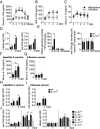
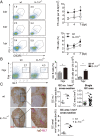
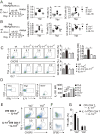
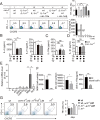
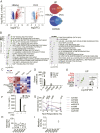
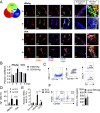
Similar articles
-
Early T Follicular Helper Cell Responses and Germinal Center Reactions Are Associated with Viremia Control in Immunized Rhesus Macaques.J Virol. 2019 Feb 5;93(4):e01687-18. doi: 10.1128/JVI.01687-18. Print 2019 Feb 15. J Virol. 2019. PMID: 30463978 Free PMC article.
-
Crucial roles of interleukin-7 in the development of T follicular helper cells and in the induction of humoral immunity.J Virol. 2014 Aug;88(16):8998-9009. doi: 10.1128/JVI.00534-14. Epub 2014 Jun 4. J Virol. 2014. PMID: 24899182 Free PMC article.
-
Interleukin-1 regulates follicular T cells during the germinal center reaction.Front Immunol. 2024 May 24;15:1393096. doi: 10.3389/fimmu.2024.1393096. eCollection 2024. Front Immunol. 2024. PMID: 38855101 Free PMC article.
-
Role of T Follicular Helper Cells in Viral Infections and Vaccine Design.Cells. 2025 Mar 29;14(7):508. doi: 10.3390/cells14070508. Cells. 2025. PMID: 40214462 Free PMC article. Review.
-
Tfh Cells in Health and Immunity: Potential Targets for Systems Biology Approaches to Vaccination.Int J Mol Sci. 2020 Nov 12;21(22):8524. doi: 10.3390/ijms21228524. Int J Mol Sci. 2020. PMID: 33198297 Free PMC article. Review.
References
-
- Seo G.-Y., Youn J., Kim P.-H., IL-21 ensures TGF-beta 1-induced IgA isotype expression in mouse Peyer’s patches. J. Leukoc. Biol. 85, 744–750 (2009). - PubMed
Publication types
MeSH terms
Substances
LinkOut - more resources
Full Text Sources
Other Literature Sources
Molecular Biology Databases
Miscellaneous

